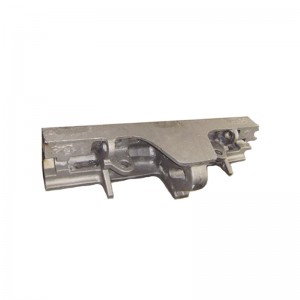- Afrikaans
- Albanian
- Amharic
- Arabic
- Armenian
- Azerbaijani
- Basque
- Belarusian
- Bengali
- Bosnian
- Bulgarian
- Catalan
- Cebuano
- China
- China (Taiwan)
- Corsican
- Croatian
- Czech
- Danish
- Dutch
- English
- Esperanto
- Estonian
- Finnish
- French
- Frisian
- Galician
- Georgian
- German
- Greek
- Gujarati
- Haitian Creole
- hausa
- hawaiian
- Hebrew
- Hindi
- Miao
- Hungarian
- Icelandic
- igbo
- Indonesian
- irish
- Italian
- Japanese
- Javanese
- Kannada
- kazakh
- Khmer
- Rwandese
- Korean
- Kurdish
- Kyrgyz
- Lao
- Latin
- Latvian
- Lithuanian
- Luxembourgish
- Macedonian
- Malgashi
- Malay
- Malayalam
- Maltese
- Maori
- Marathi
- Mongolian
- Myanmar
- Nepali
- Norwegian
- Norwegian
- Occitan
- Pashto
- Persian
- Polish
- Portuguese
- Punjabi
- Romanian
- Russian
- Samoan
- Scottish Gaelic
- Serbian
- Sesotho
- Shona
- Sindhi
- Sinhala
- Slovak
- Slovenian
- Somali
- Spanish
- Sundanese
- Swahili
- Swedish
- Tagalog
- Tajik
- Tamil
- Tatar
- Telugu
- Thai
- Turkish
- Turkmen
- Ukrainian
- Urdu
- Uighur
- Uzbek
- Vietnamese
- Welsh
- Bantu
- Yiddish
- Yoruba
- Zulu
Nov . 12, 2024 11:24 Back to list
metal heat exchanger
The Role of Metal in Heat Exchangers
Heat exchangers are crucial components in various industrial processes, facilitating the transfer of heat between two or more fluids without mixing them. They are widely utilized in industries such as power generation, chemical processing, and HVAC (heating, ventilation, and air conditioning). One of the most significant factors influencing the efficiency and performance of heat exchangers is the type of metal used in their construction. This article explores the role of metals in heat exchangers, highlighting their properties, advantages, and the selection criteria for ideal materials.
Importance of Metals in Heat Exchangers
The effectiveness of a heat exchanger largely depends on the thermal conductivity of the metal used. Metals with high thermal conductivity, such as copper and aluminum, allow for efficient heat transfer, reducing energy consumption and improving system performance. For instance, copper has been a preferred choice for many applications due to its excellent thermal properties and durability. It not only conducts heat effectively but is also resistant to corrosion, making it suitable for various fluid types.
In contrast, metals such as stainless steel are often selected for their corrosion resistance and mechanical strength. While stainless steel may not have the same level of thermal conductivity as copper, its ability to withstand harsh environments allows it to be used in applications where corrosion is a significant concern. For example, in chemical processing, where fluids may be corrosive, stainless steel provides longevity and reliability.
Types of Metals Used in Heat Exchangers
1. Copper Known for its superior thermal conductivity, copper heat exchangers are highly efficient. They are often used in residential and commercial applications, such as water heaters and air conditioning systems. The primary drawback of copper is its susceptibility to corrosion in certain conditions, which has led to the increased use of protective coatings.
2. Aluminum This lightweight metal is an excellent option, especially for compact and lightweight heat exchangers. Aluminum’s thermal conductivity is only slightly lower than that of copper, and it is also less expensive. However, it can be prone to oxidation, which may require protective treatments.
metal heat exchanger

3. Stainless Steel Commonly used in applications requiring high levels of corrosion resistance, stainless steel is ideal for chemical processing and food industry heat exchangers. Its strength allows it to withstand high pressures and temperatures, though it is typically more expensive than aluminum and copper.
4. Titanium For highly corrosive environments, titanium heat exchangers are an excellent choice. Though often more costly, titanium’s longevity and resistance to oxidation and corrosion make it an attractive option in industries such as marine and petrochemical.
Criteria for Selecting Metal Materials
When selecting metals for heat exchangers, several crucial factors must be considered
- Thermal Conductivity Higher thermal conductivity allows for better heat transfer, making it a essential criterion for material selection. - Corrosion Resistance The environment in which the heat exchanger will operate is essential. Corrosive fluids require materials with high resistance to chemical degradation. - Thermal Expansion Different metals expand at different rates when exposed to temperature changes. It is critical to choose materials that maintain structural integrity under varying thermal conditions. - Cost and Availability Budget constraints and material availability can impact the choice of metals. While some metals may perform better, their cost can be prohibitive for certain applications.
Conclusion
The choice of metal for heat exchangers is a critical consideration that impacts both performance and longevity. Each metal offers unique advantages and drawbacks, and the right selection depends on the specific application requirements, including thermal conductivity, corrosion resistance, and cost. As industries continue to evolve and seek improved efficiencies, the development of new metal alloys and composites will likely play an increasingly important role in enhancing the performance of heat exchangers. Understanding the properties of these metals and their applications will ensure that engineers can design heat exchangers that not only meet but exceed operational expectations.
-
Premium Cast Iron Water Main Pipe: Durable, Corrosion-Resistant
NewsAug.03,2025
-
Durable Cast Iron Water Mains | AI-Optimized Systems
NewsAug.02,2025
-
High-Efficiency Propane Boiler for Baseboard Heat | Save Energy
NewsAug.01,2025
-
Premium Source Suppliers for Various Gray Iron Castings
NewsJul.31,2025
-
Durable Cast Iron Water Main Pipes | Long-Lasting
NewsJul.31,2025
-
High-Quality Cast Iron Water Main Pipe for Durable Infrastructure
NewsJul.30,2025


